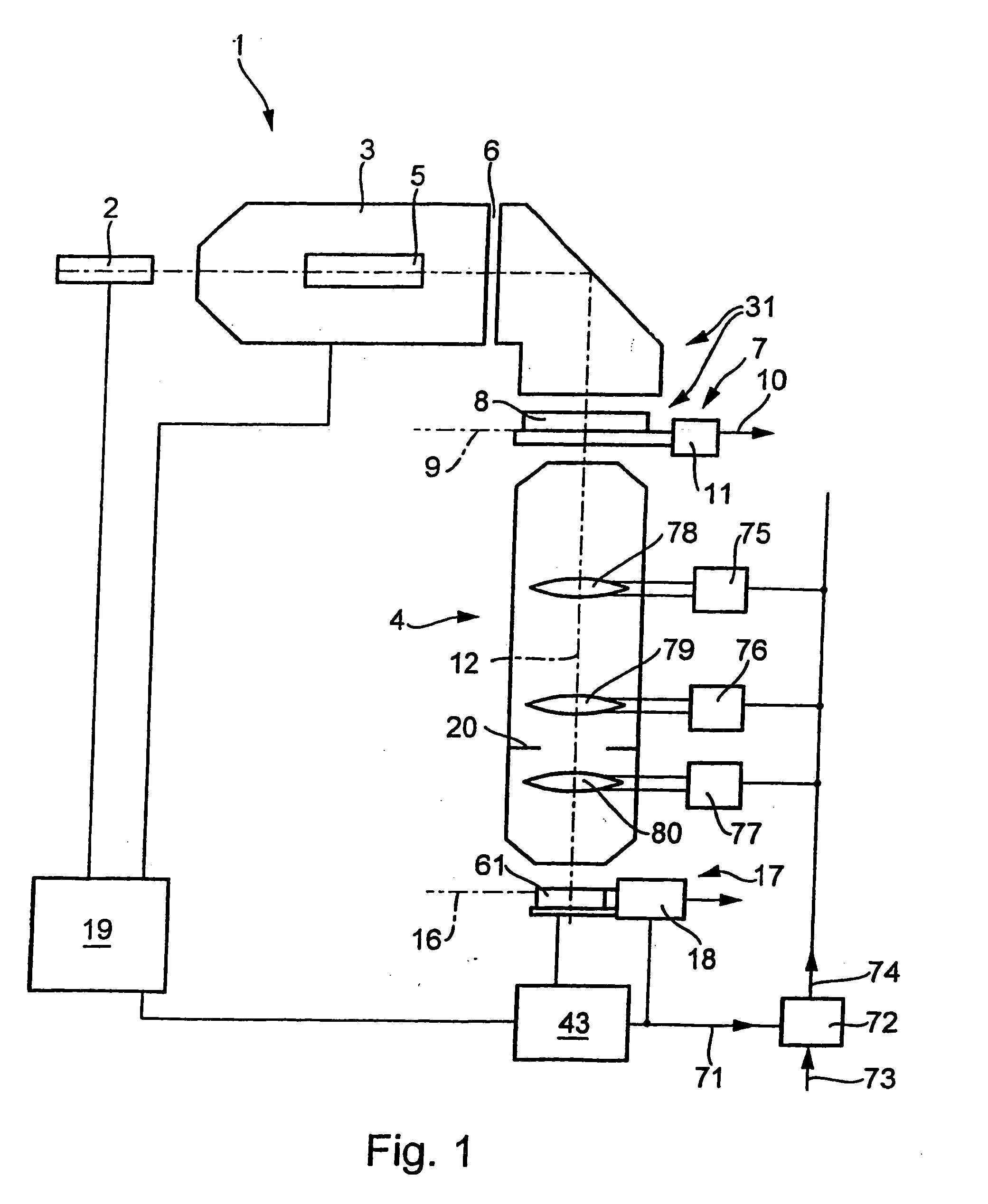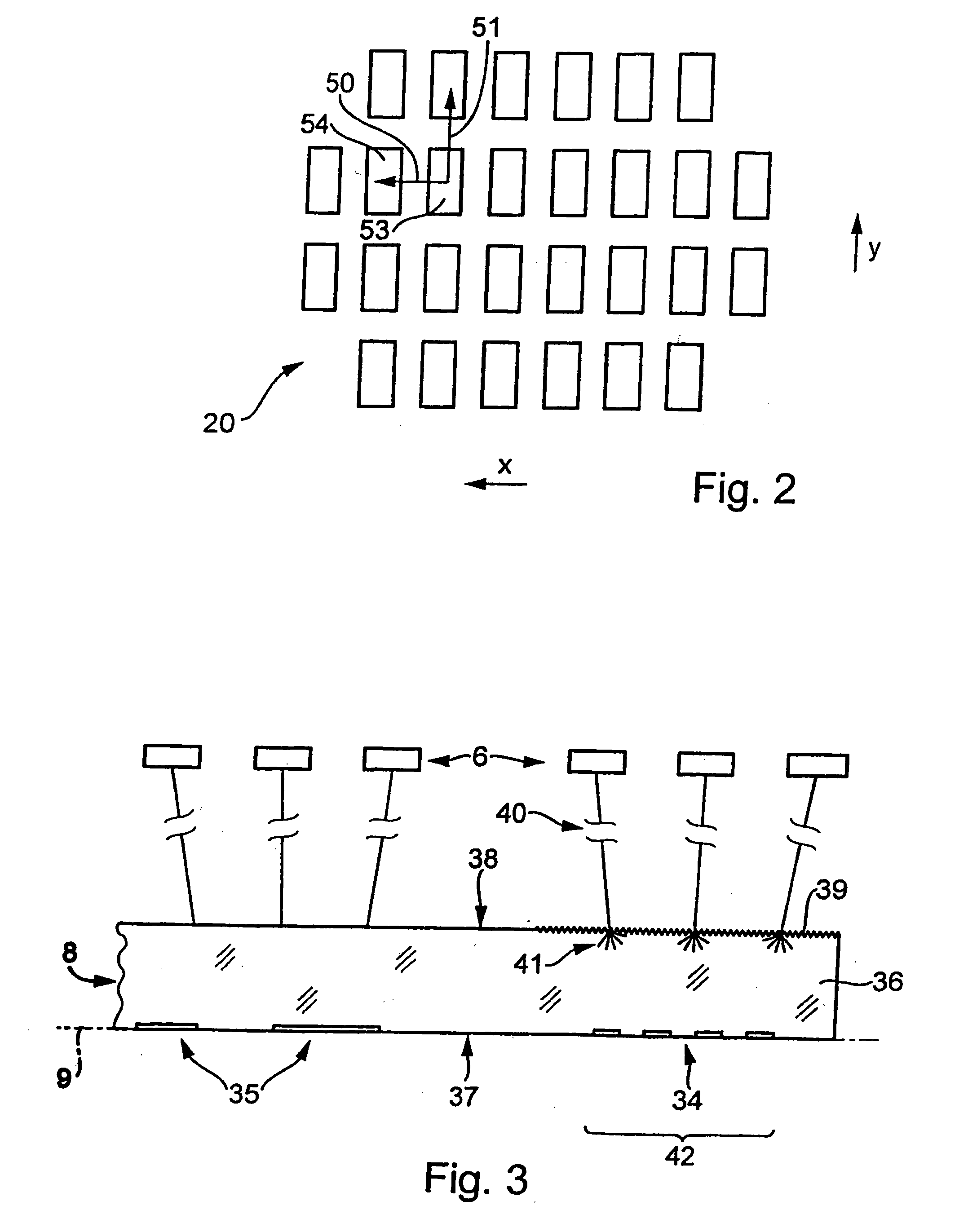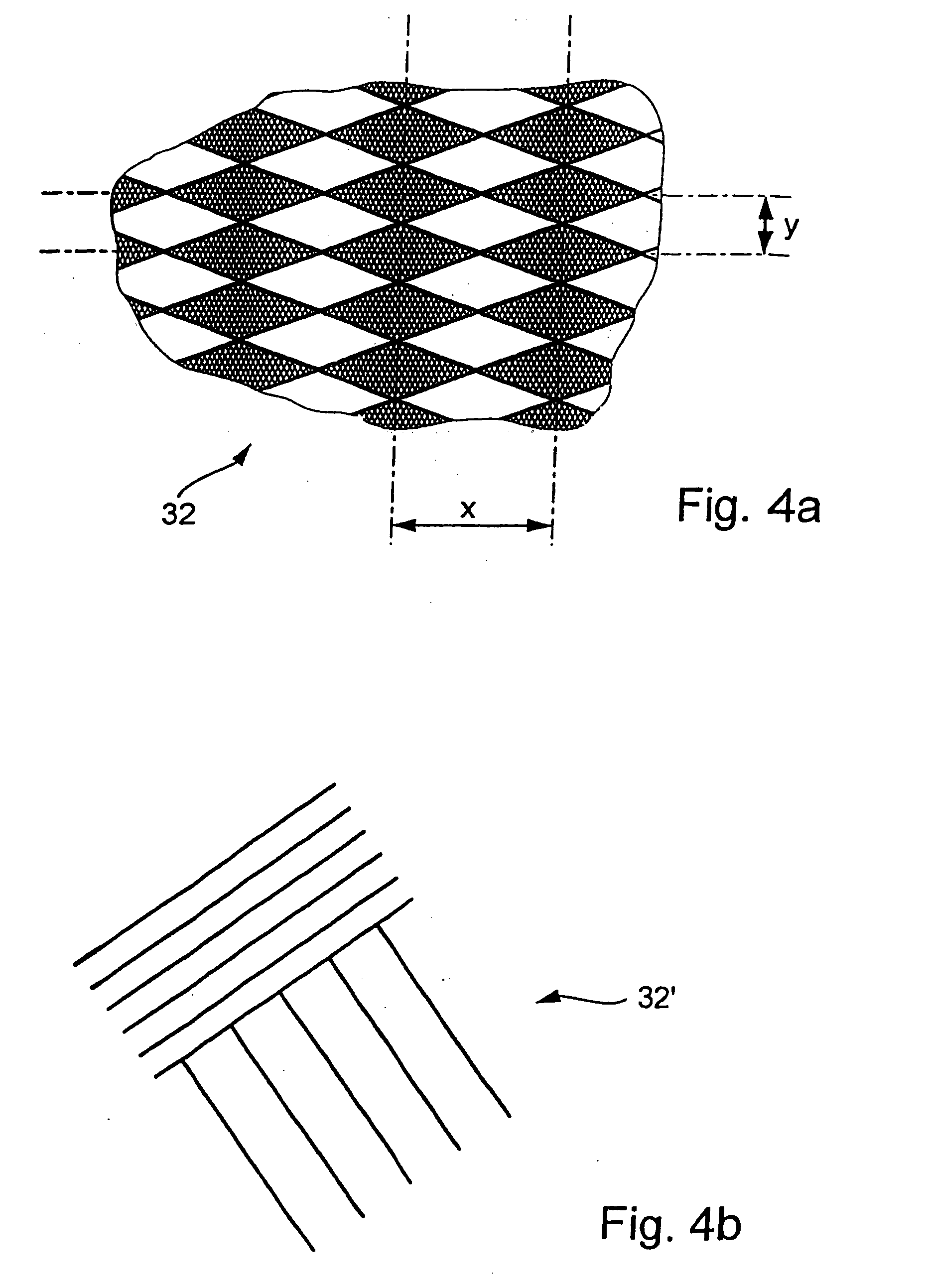Interferometric measuring device and projection exposure installation comprising such measuring device
a technology of interferometry and measuring devices, which is applied in the direction of photomechanical devices, instruments, printers, etc., can solve problems such as the optical properties of the device, and achieve the effect of simple structure, rapid and fault-free measurements
- Summary
- Abstract
- Description
- Claims
- Application Information
AI Technical Summary
Benefits of technology
Problems solved by technology
Method used
Image
Examples
Embodiment Construction
[0038]FIG. 1 shows in schematic form a microlithography projection exposure installation in the form of a wafer stepper 1, which is provided for the production of highly integrated semiconductor components. The projection exposure installation comprises an excimer laser 2 as the light source, which emits light with an operating wavelength of 248 nm, it being possible for the operating wavelength in other embodiments also to lie below this, for example at 193 nm or 157 nm, or above this. There are also systems which operate with shorter wavelengths from the EUV range and corresponding light sources. An illumination system 3 connected downstream generates a large, sharply delimited and homogeneously illuminated image field, which is adapted to the telecentric requirements of the projection objective 4 connected downstream. The projection objective 4 is a preferred embodiment of an optical imaging system to be measured. The illumination system has devices for selecting the illuminating...
PUM
| Property | Measurement | Unit |
|---|---|---|
| angles | aaaaa | aaaaa |
| angles | aaaaa | aaaaa |
| angles | aaaaa | aaaaa |
Abstract
Description
Claims
Application Information
 Login to View More
Login to View More - R&D
- Intellectual Property
- Life Sciences
- Materials
- Tech Scout
- Unparalleled Data Quality
- Higher Quality Content
- 60% Fewer Hallucinations
Browse by: Latest US Patents, China's latest patents, Technical Efficacy Thesaurus, Application Domain, Technology Topic, Popular Technical Reports.
© 2025 PatSnap. All rights reserved.Legal|Privacy policy|Modern Slavery Act Transparency Statement|Sitemap|About US| Contact US: help@patsnap.com



